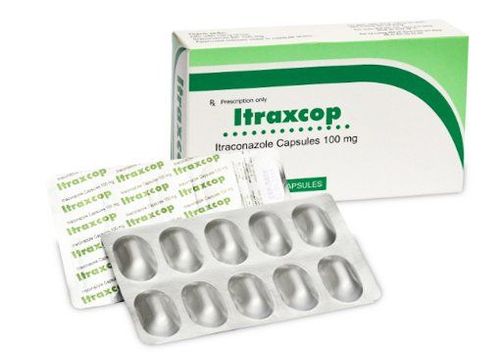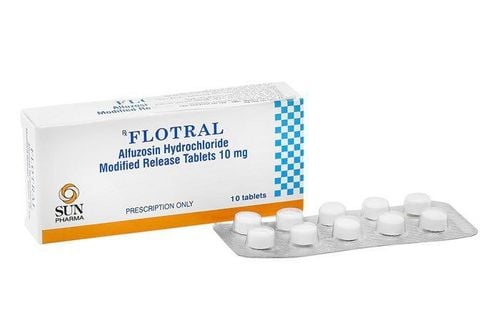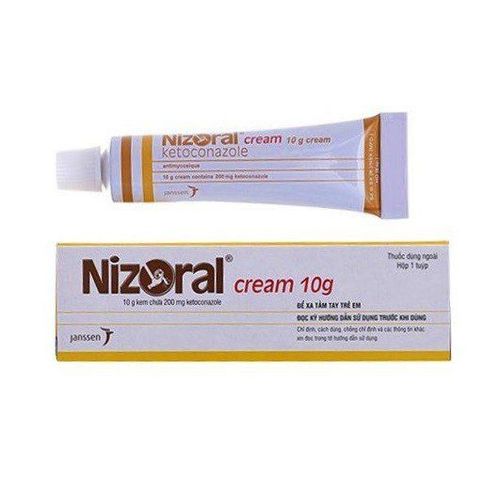This is an automatically translated article.
Sanuzo's main ingredient is Itraconazole 100mg, which is commonly used in the treatment of vaginal yeast infections, skin fungus, nail fungus, tinea versicolor... Let's find out the use of Sanuzo through article below.1. What is Sanuzo?
Sanuzo drug is made in the form of hard gelatin capsules, with the main ingredients including:
Active ingredient: Itraconazole 100mg. Excipients: Inert granules just enough for 1 capsule. Pharmacodynamics:
Itraconazole is a synthetic broad-spectrum antifungal agent that inhibits the synthesis of ergosterol dependent on Cytochrome P-450, a component of fungal cell membranes. The decline in Ergosterol synthesis eventually leads to an antifungal effect of Itraconazole. The active ingredient Itraconazole is effective on fungi such as Blastomyces dermatitidis, Histoplasma duboisii, Histoplasma capsulatum, Aspergillus flavus, Aspergillus fumigatus, Cryptococcus neoformans, Coccidioides immitis, Cryptococcus neoformans, Sporothrix schenckii, Trichophyton rubrum, and Itraconazole. on different species for Trichophyton, Sporothrix schenckii, Candida albicans and Candida species.
2. What are the effects of Sanuzo?
Sanuzo is indicated for the treatment of mild to moderate bacterial infections in the following cases:
Vulvar or vaginal candidiasis. Ringworm, tinea versicolor, keratoconjunctivitis, oral candidiasis, nail fungus. Visceral fungal infections caused by Aspergillus and Candida or tropical fungi are rare. Cryptococcus, fungal diseases caused by Sporotrichum, Histoplasma, Paracoccidioides, Blastomyces.
3. Contraindications of the drug Sanuzo
Hypersensitivity to any component of the drug Sanuzo. History of hypersensitivity to other drugs containing Itraconazole. History of hypersensitivity to other antifungal drugs. Patient is pregnant or intends to become pregnant. The patient is being treated with drugs such as Astemizole, Cisapride, Terfenadine, Oral Midazolam or Oral Triazolam.
4. Dosage of the drug Sanuzo
Vaginal candidiasis: Take 1 tablet (100mg)/time x 2 times/day for 3 days. Or 2 tablets (200mg)/time x 2 times/day for 1 day. Tinea capitis, tinea versicolor: Take 2 tablets (200mg)/time x 1 time/day for 7 days. Or take 1 tablet (100mg)/time x 1 time/day for 15 days. Dermatophytosis of the feet or palms: Take 2 tablets (200mg)/time x 2 times/day for 7 days. Or take 1 tablet (100mg)/time x 1 time/day for 30 days. Oral candidiasis: Take 1 tablet (100mg)/time x 1 time/day for 15 days. Ocular fungal disease: Take 2 tablets (200mg) / time x 1 time / day for 21 days. Onychomycosis: Toenail fungus with or without nail fungus: Take 2 tablets (200mg)/time x 2 times/day for 1 week, then stop the drug for the next 3 weeks. Apply until the end of the 3rd course of treatment. Simple nail fungus: Use the dose and duration of treatment as above, but only apply up to 2 treatments. Visceral mushrooms: The dose is based on different types of mushrooms. Aspergillus: Take 2 tablets (200mg)/time x 1 time/day for 2-5 months. Increase dose to 2 tablets (200mg) / time x 2 times / day if there is infection or spread. Candida: Take 1-2 tablets (100-200mg)/time x 1 time/day for 3 weeks -7 months. Increase dose to 2 tablets (200mg) / time x 2 times / day if there is infection or spread. Epidural Cryptococcus: Take 2 tablets (200mg)/time x 1 time/day for 2 months - 1 year. Cryptococcal meningitis: Take 2 tablets (200mg)/time x 2 times/day for 2 months - 1 year. Maintenance treatment with a dose of 2 tablets (200mg) / time x 1 time / day. Histoplasma: Take 2 tablets (200mg)/time x 1-2 times/day for 8 months. Sporotrichum: Take 1 tablet (100mg)/time x 1 time/day for 3 months. Paracoccidioides: Take 1 tablet (100mg)/time x 1 time/day for 6 months. Blastomyces: Take 1 tablet (100mg) / time x 1 time / day or increase the dose to 2 tablets (200mg) / time x 2 times / day for 6 months.
5. Precautions when using Sanuzo
Treatment with Sanuzo drug with high dose or long term, may cause side effects such as:
Common: Gastrointestinal disturbances such as dyspepsia, nausea, vomiting, abdominal pain or constipation Rare: Symptoms on nerves such as headache, dizziness, dizziness. Hypersensitivity reactions such as pruritus, urticaria, angioedema, erythema, severe may lead to anaphylaxis. Stevens-Johnson syndrome. Other symptoms such as edema, hepatitis, reversible elevation of liver enzymes, menstrual disorders, hypokalemia, hair loss. The drug should be discontinued when detecting the above symptoms or any other abnormalities after taking Sanuzo tablets. Patients and relatives need to quickly inform the treating doctor about the use of Sanuzo drug and immediately go to the nearest medical facility for supportive treatment.
Note the use of Sanuzo drug in the following subjects:
Use caution when using Sanuzo in elderly patients, people with severe liver and kidney function decline. The use of Sanuzo in children should be limited because of limited data on safety. Pregnant women: According to the US Food and Drug Administration (FDA), the active ingredient Itraconazole in Sanuzo is classified as safe in Group C, a group with evidence of a harmful risk to pregnant women. Therefore, the use of Sanuzo is contraindicated in women who are pregnant or intend to become pregnant. Lactation: There are currently some studies showing that the active ingredient Itraconazole contained in Sanuzo can be excreted in breast milk, but at low concentrations. Therefore, it is necessary to weigh the benefits and harms of Sanuzo before deciding to use it. Drivers or machine operators are usually not affected much after using Sanuzo.
6. Sanuzo drug interactions
Interactions with other drugs:
Sanuzo reduces the absorption of drugs that neutralize stomach acid. Therefore, drugs that neutralize stomach acid such as aluminum hydroxide should be taken at least 2 hours after taking Sanuzo. Contraindicated to use Sanuzo in combination with drugs such as Astemizole, Cisapride, Terfenadine, Oral Midazolam or Oral Triazolam. Sanuzo drug increases the concentration of drugs such as Rifabutin, Rifampicin and Phenytoin in the blood, thereby increasing or prolonging the therapeutic effect and effects of the drug. Drugs such as Phenytoin, Isoniazid, Rifampin and Histamine H2 antagonists reduce the concentration of Sanuzo in the blood. Sanuzo potentiates the anticoagulant effect of Coumarins. Taking Sanuzo with oral hypoglycemic agents can cause side effects such as severe hypoglycemia. Taking Sanuzo with Quinidine can cause side effects such as tinnitus, decreased hearing. Taking Sanuzo with a calcium channel blocker Dihydropyridine may cause edema. Above is the general information and notes when using Sanuzo. In order to bring the best treatment results for themselves and their families, patients should carefully read the instructions for use on the box of Sanuzo drug products and strictly follow the instructions of their doctor or pharmacist.













